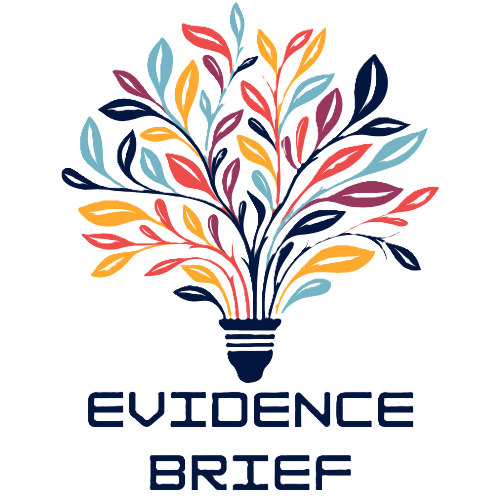As a writer and visual storyteller, I’ve discovered that images hold incredible power to spark creativity and breathe life into our words. Whether you’re crafting a novel, blog post, or short story, incorporating visual elements can transform your creative writing process and captivate your readers in ways plain text simply can’t match.
I’ve spent years exploring the relationship between imagery and storytelling, learning how visual prompts can unlock new dimensions of creativity. From selecting the perfect featured image for a blog post to using photo inspiration for character development, the connection between words and visuals runs deep. This synergy has revolutionized my writing approach and helped countless other writers enhance their creative expression.
Key Takeaways
- Creative writing imagery engages readers’ senses through five main types: visual, auditory, tactile, olfactory, and gustatory descriptions that create vivid mental pictures
- Strong imagery combines specific sensory details, active verbs, and concrete nouns with literary devices like metaphors and similes to establish mood and emotional connections
- The “”show don’t tell”” technique transforms basic statements into engaging scenes by using physical reactions, micro-actions, and precise descriptive details instead of stating emotions directly
- Effective imagery avoids common pitfalls like sensory overload, clichéd expressions, mixed metaphors, and inconsistent perspective while maintaining natural flow within the narrative
- Writers can improve their imagery skills through targeted exercises like sensory journaling, object description challenges, and location sketches that enhance observational abilities
Creative Writing Image
Creative writing imagery engages readers’ senses through descriptive language that creates mental pictures. I define imagery as the deliberate use of vivid sensory details to evoke specific emotions responses in readers.
Creative writing imagery includes five distinct types:
- Visual imagery paints pictures of colors shapes movements (a crimson sunset fading behind jagged mountains)
- Auditory imagery captures sounds echoes voices (wind whistling through empty hallways)
- Tactile imagery conveys textures temperatures touch (rough bark scratching against fingertips)
- Olfactory imagery describes scents smells aromas (fresh coffee beans being ground)
- Gustatory imagery expresses tastes flavors (tangy lemon zest bursting on the tongue)
Key elements that strengthen creative writing imagery:
- Specific sensory details rather than general descriptions
- Active verbs that show rather than tell the action
- Fresh unexpected word combinations
- Concrete nouns that readers can picture
- Strategic use of literary devices like metaphor simile
I’ve found that effective imagery creates an immersive reading experience by:
- Establishing mood atmosphere through sensory engagement
- Building emotional connections between readers characters
- Grounding abstract concepts in tangible details
- Adding authenticity depth to scenes settings
- Creating memorable lasting impressions
The most impactful creative writing imagery combines multiple senses to craft vivid memorable scenes. For example describing a beach scene with “”salt spray stinging my face as waves thunder against rocks seagulls screech overhead”” engages sight sound touch smell simultaneously.
Types of Sensory Images in Writing
 Sensory images in creative writing engage readers by stimulating their five senses through carefully chosen words and descriptions. I’ve identified three primary categories of sensory imagery that create vivid mental pictures in readers’ minds.
Sensory images in creative writing engage readers by stimulating their five senses through carefully chosen words and descriptions. I’ve identified three primary categories of sensory imagery that create vivid mental pictures in readers’ minds.
Visual Imagery
Visual imagery paints pictures through words that describe what can be seen. I incorporate colors, shapes, sizes, movements, and light patterns to create scenes readers visualize instantly. Examples include:
- Describing the crimson sunset streaking across storm clouds
- Detailing a character’s appearance with specific features like crow’s feet or calloused hands
- Capturing motion through phrases like “”leaves spiraling down””
- Using light descriptions such as “”dappled sunlight filtering through branches””
Auditory Imagery
Auditory imagery recreates sounds through descriptive language that makes readers hear the scene. I focus on:
- Natural sounds: rustling leaves, crashing waves, howling wind
- Human-made sounds: squeaking floorboards, humming engines, tinkling wind chimes
- Voice descriptions: gravelly whispers, melodious laughter, thunderous shouts
- Musical elements: staccato footsteps, rhythmic drumbeats, discordant screeches
- Texture descriptions: rough bark, silky fabric, sticky honey
- Temperature sensations: biting cold, scorching heat, cool breeze
- Physical movements: muscles burning, heart racing, fingers trembling
- Environmental feelings: humid air, sharp wind, gentle mist
Using Figurative Language to Create Images
Figurative language transforms ordinary descriptions into powerful sensory experiences. I employ these literary devices to craft memorable scenes that resonate with readers through imaginative comparisons and personified elements.
Metaphors and Similes
Metaphors create direct connections between two unlike things, while similes use “”like”” or “”as”” for comparison. I incorporate metaphors such as “”her voice was silk”” or similes like “”the wind howled like a wounded wolf”” to paint vivid mental pictures. Here’s how I structure effective comparisons:
- Choose unexpected yet relatable comparisons that highlight specific qualities
- Link abstract concepts to concrete objects for clearer understanding
- Create fresh associations that avoid clichéd expressions
- Layer multiple sensory elements within single comparisons
- Select comparisons relevant to the story’s context or setting
- Assign human emotions to nature elements (The autumn leaves danced across the street)
- Give objects human actions (The camera winked at me)
- Create personality traits for abstract concepts (Truth whispered in my ear)
- Develop relationships between nonliving things (The moon embraced the clouds)
- Use human sensory experiences (The old house groaned with memories)
| Type of Figurative Language | Purpose | Example |
|---|---|---|
| Metaphor | Direct comparison | Her eyes were diamonds |
| Simile | Indirect comparison | The stars sparkled like scattered gems |
| Personification | Human attributes | The wind fingers played with her hair |
Best Practices for Descriptive Writing
Descriptive writing transforms abstract concepts into tangible experiences through carefully chosen words and techniques. I’ve discovered specific methods that elevate descriptive writing from basic to exceptional.
Show Don’t Tell Technique
The show don’t tell technique creates vivid scenes by presenting sensory details instead of stating emotions or situations directly. I transform basic statements into engaging descriptions by:
- Converting emotional statements into physical reactions (racing heart, trembling hands)
- Replacing adverbs with specific actions (“”shuffled quietly”” becomes “”tiptoed across creaking floorboards””)
- Describing environmental details that reflect mood (dark clouds, sharp winds)
- Using dialogue to reveal character traits rather than stating them
- Including micro-actions that demonstrate feelings (drumming fingers, biting lips)
- Exact measurements (“”six-inch heels”” vs “”high heels””)
- Precise color names (“”crimson”” vs “”red””)
- Brand names for authenticity (“”MacBook”” vs “”laptop””)
- Distinct sensory markers (“”petrichor”” vs “”rain smell””)
- Time-specific references (“”8:45 AM”” vs “”morning””)
- Geographic locations (“”Manhattan’s Upper East Side”” vs “”New York””)
| Detail Type | Generic Example | Specific Example |
|---|---|---|
| Color | Blue | Cobalt |
| Sound | Loud | 90 decibels |
| Size | Big | 6 feet tall |
| Temperature | Hot | 98°F |
| Distance | Far | 2.5 miles |
Common Mistakes to Avoid
- Overloading Descriptions
- Limiting sensory details to 2-3 per scene maintains clarity
- Focusing on essential details that advance the story
- Selecting impactful descriptors rather than listing multiple adjectives
- Using Clichéd Imagery
- Avoiding worn-out phrases like “”heart of gold”” or “”cold as ice””
- Creating fresh comparisons unique to the story’s context
- Developing original metaphors that reflect character perspectives
- Mixing Sensory Metaphors
- Maintaining consistent sensory categories in descriptions
- Avoiding combinations like “”the taste of freedom smelled sweet””
- Keeping metaphors aligned with their original sensory domain
- Neglecting Character Perspective
- Incorporating only details the viewpoint character notices
- Filtering descriptions through the character’s background
- Matching imagery to the character’s emotional state
- Generic Word Choices
- Replacing vague terms like “”good”” or “”nice”” with specific descriptors
- Using precise verbs instead of verb + adverb combinations
- Selecting concrete nouns over abstract concepts
- Inconsistent Imagery
- Maintaining tonal consistency throughout descriptions
- Aligning imagery with the scene’s mood
- Creating cohesive visual patterns within scenes
- Front-Loading Descriptions
- Distributing imagery throughout the scene
- Integrating sensory details with action
- Weaving descriptions naturally into dialogue
- Repetitive Sensory Language
- Varying descriptive words within scenes
- Tracking repeated phrases across chapters
- Creating unique sensory profiles for different settings
- Forced Symbolism
- Integrating symbolic elements subtly
- Allowing readers to discover deeper meanings
- Avoiding heavy-handed metaphoric connections
- Incomplete Sensory Experiences
- Including multiple senses when appropriate
- Creating balanced sensory descriptions
- Considering the full range of physical experiences
Exercises to Improve Imagery Skills
- Sensory Detail Journal
- Record 3 unique observations for each sense daily
- Describe the texture of morning coffee foam
- Document the specific sounds of a busy intersection
- Note the exact shade of sunset colors
- Object Description Challenge
- Select 5 everyday objects
- Write detailed descriptions without naming the items
- Focus on unusual characteristics
- Incorporate multiple sensory elements
- Location Sketch
- Visit 3 different locations monthly
- Capture the ambient sounds in specific terms
- Document temperature variations throughout spaces
- Map the movement patterns of people or objects
- Character Physical Response
- List 10 emotional states
- Create corresponding physical reactions
- Document facial muscle movements
- Record involuntary body responses
- Weather Impact Analysis
- Monitor weather changes hourly
- Note environmental effects on surroundings
- Record mood alterations due to climate
- Track light pattern variations
- Taste Memory Exercise
- Sample 5 distinct flavors
- Document initial taste impressions
- Note flavor transitions on the tongue
- Record aftertaste characteristics
- Sound Mapping
- Create 15-minute sound logs
- Identify distinct sound layers
- Note volume variations
- Document sound interactions
- Texture Exploration
- Collect 10 different materials
- Compare surface characteristics
- Document temperature variations
- Record pressure responses
- Scent Association
- Identify 5 unique aromas daily
- Link scents to specific memories
- Note emotional connections
- Document intensity levels
- Movement Observation
- Track motion patterns in nature
- Document speed variations
- Record rhythm changes
- Note movement interactions
Each exercise focuses on developing specific aspects of sensory awareness essential for creating vivid imagery in writing. I recommend practicing these exercises for 15 minutes daily to strengthen observation skills and expand descriptive vocabulary.
I’ve found that mastering creative writing imagery transforms ordinary words into extraordinary experiences. The power to paint vivid pictures through carefully chosen words lets writers create unforgettable moments in readers’ minds.
Through deliberate practice and attention to sensory details we can craft stories that resonate deeply and leave lasting impressions. Whether you’re writing a novel or a blog post the skillful use of imagery elevates your work from simple narratives to immersive experiences.
I encourage you to experiment with different types of imagery and practice the techniques shared here. Remember that great imagery isn’t about using more words – it’s about choosing the right ones to bring your stories to life.

